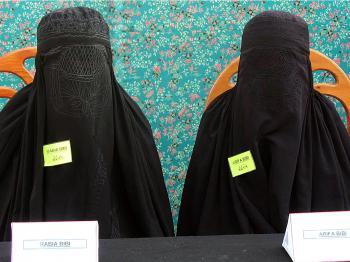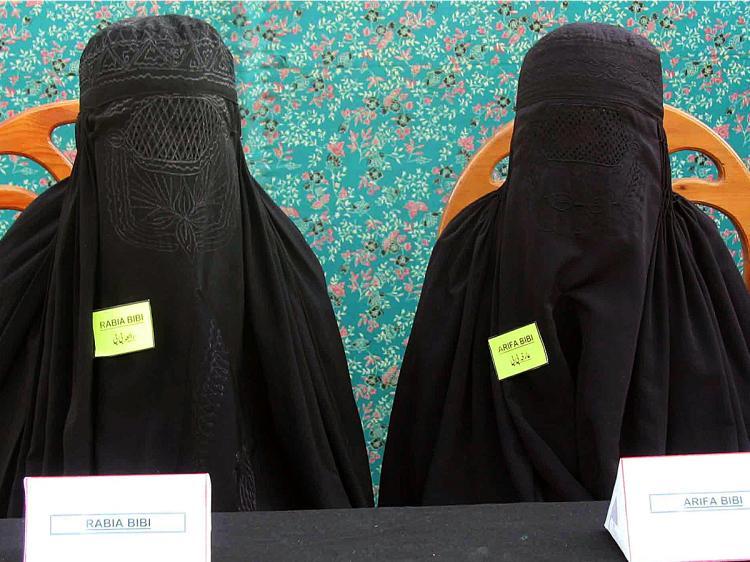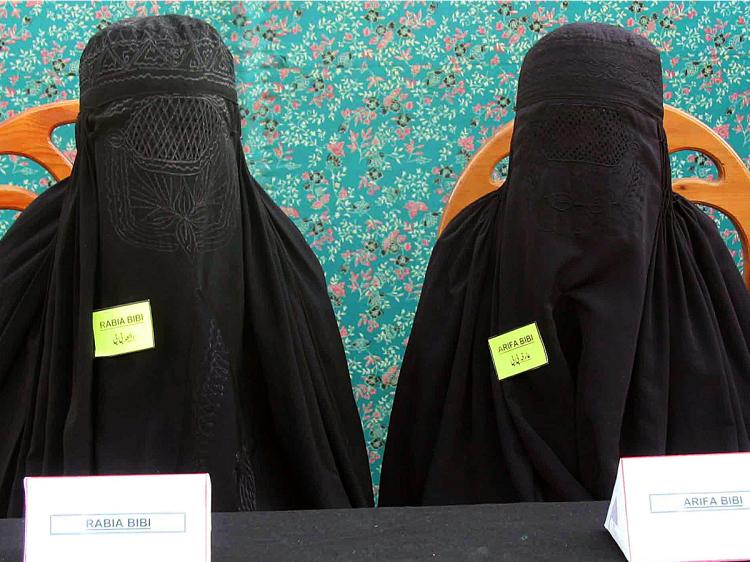The pilgrims had been walking for a week already.
Some had traveled as far as 264 miles on foot from the southern port city of Basra, and were close to their destination of Karbala, the shrine city.
Tired and weary, they had stopped at one of the many roadside hospitality tents, named “mawkeb” (or caravan), in the town of Bab al Shams.
The patron of the mawkeb had offered them food and water, and a brief respite on their annual pilgrimage that they share with up to 10 million other Shia Muslims.
Their goal was to reach the shrine of Hussein, the grandson of the Prophet Muhammed, before the festival of Arba'een, on Feb. 5.
However, as they were eating dates and contemplating the journey ahead, the unthinkable happened.
A pillar of flame burst out from under the abaya of a woman who had been standing inside the tent. The sound of the explosion was replaced by a low wail of the injured survivors of the attack.
“I saw the bodies of women and children, and bags and slippers strewn all around in pools of blood,” said taxi driver Ahmad Najem, 30, a witness to the suicide bombing last Monday who spoke to international media.
Fifty-four pilgrims lay dead as a result of the attack.
The identity of the woman who carried out the suicide bombing and her motives for doing so, were lost in the ruins of the mawkeb.
Her biggest strength, was that no one suspected her, as a woman, to carry out an atrocity on that scale. Indeed, among the dead were five women employed to search female pilgrims for bombs.
Ex-White House adviser Richard Clarke, said that intelligence reports suggest that al-Qaeda has trained female mujahedeen, jihad warriors, to sabotage planes.
“They have trained women,” he said at the end of January. “There are others who are still out there who have been trained and who are clean skins—that means people who we do not have a record of.
“These people may not look like al-Qaeda, may not be Arabs and may not be men.”
The statement came at the same time as the terrorism threat level in the U.K., was raised from ’substantial‘ to ’severe.’
But the news that women are being systematically recruited by al-Qaeda is not a new one.
In 2003, the Saudi-owed newspaper Asharq Al-Awsat published an e-mail interview with the leader of the female mujahedeen of al-Qaeda.
The woman said that the organization was planning a new attack which would make the United States forget Sept. 11, and that the idea came from the martyr operations carried out by the Palestinian women.
Some had traveled as far as 264 miles on foot from the southern port city of Basra, and were close to their destination of Karbala, the shrine city.
Tired and weary, they had stopped at one of the many roadside hospitality tents, named “mawkeb” (or caravan), in the town of Bab al Shams.
The patron of the mawkeb had offered them food and water, and a brief respite on their annual pilgrimage that they share with up to 10 million other Shia Muslims.
Their goal was to reach the shrine of Hussein, the grandson of the Prophet Muhammed, before the festival of Arba'een, on Feb. 5.
However, as they were eating dates and contemplating the journey ahead, the unthinkable happened.
A pillar of flame burst out from under the abaya of a woman who had been standing inside the tent. The sound of the explosion was replaced by a low wail of the injured survivors of the attack.
“I saw the bodies of women and children, and bags and slippers strewn all around in pools of blood,” said taxi driver Ahmad Najem, 30, a witness to the suicide bombing last Monday who spoke to international media.
Fifty-four pilgrims lay dead as a result of the attack.
The identity of the woman who carried out the suicide bombing and her motives for doing so, were lost in the ruins of the mawkeb.
Her biggest strength, was that no one suspected her, as a woman, to carry out an atrocity on that scale. Indeed, among the dead were five women employed to search female pilgrims for bombs.
Ex-White House adviser Richard Clarke, said that intelligence reports suggest that al-Qaeda has trained female mujahedeen, jihad warriors, to sabotage planes.
“They have trained women,” he said at the end of January. “There are others who are still out there who have been trained and who are clean skins—that means people who we do not have a record of.
“These people may not look like al-Qaeda, may not be Arabs and may not be men.”
The statement came at the same time as the terrorism threat level in the U.K., was raised from ’substantial‘ to ’severe.’
But the news that women are being systematically recruited by al-Qaeda is not a new one.
In 2003, the Saudi-owed newspaper Asharq Al-Awsat published an e-mail interview with the leader of the female mujahedeen of al-Qaeda.
The woman said that the organization was planning a new attack which would make the United States forget Sept. 11, and that the idea came from the martyr operations carried out by the Palestinian women.
The rise of the istish-hadiyat, (or ‘female martyr’), has grown significantly in recent years among militant Islamic groups, especially in Palestine.
Terrorism expert Mia Bloom, claims that 34 percent of suicide bombings worldwide in 1985-2005 were carried out by women.
Although the growth in the number of bombings carried out by women in recent years may be due to the recruitment policies of militant Islamists, the phenomenon has its roots in secular terrorist organizations.
A quarter of suicide bombers employed by the Sri Lankan rebel group, the Tamil Tigers, were women, analysts say.
Indeed, it was a woman who carried out the assassination of former Indian Prime Minister Rajiv Gandhi, in May 1991.
During the 1980s, the tactic was pioneered by the Lebanese Communist Party against Israeli forces.
However the mass recruitment of women to carry out suicide attacks maybe a relatively new one.
According to Lindsey O'Rourke, an analyst who has carried out extensive research into the issue, the number female suicide attacks has risen from eight in the 1980s to well over 100 since 2000.
She claims that taboos against female martyrdom have been broken down in later years, owing to the devastating effect that women can have.
In a recent study, she argued that the average number of victims resulting from an attack by a woman is 8.4, versus 5.3 killed per male attack.
It is traditional prejudices against women, coupled with the long flowing abayas that are commonly worn by women in the region, that render them more likely to successfully carry out an attack, O'Rouke said.
“Given their second-class citizenship in many of these countries, women generate less suspicion and are better able to conceal explosives,” she said in a commentary in the New York Times.
In addition, especially in Iraq where the insurgency is viewed as a battle against U.S. opposition, such a commitment by women to the path of the istish-hadiyat, is increasingly being viewed as a religious duty.
In August 2004, the first Arabic-language magazine aimed at women, named al-Khansa, was launched on the Internet.
The first edition said that “martyrdom for the sake of Allah” and gaining “the pleasure of Allah and His Paradise” should be the goal of Muslim women.
Just over a year later, Mureille Degauque, 38, a former bakery assistant from a middle-class family near Brussels, blew herself up in an attack on a U.S. convoy in Iraq.
The first European suicide bomber, Degauque was a recent convert to Islam. She had married a Belgian of Moroccan descent who had become a militant. He took her to Iraq to fight the Americans.
The U.S. government has introduced a program called ‘Daughters of Iraq,’ to train women to search for female suicide bombers.
However less than 100 have so far graduated from the course, and those that do are expected to work only a few days each month.
According to O'Rouke, the prevalence of female suicide bombers is likely to get worse before it gets better.
“Given the strategic desirability of female attackers,” she wrote in the Times commentary, “we’re likely to see an increasing number of Iraqi women killing themselves and their countrymen in an effort to end what they see as the occupation of their nation.”







Friends Read Free